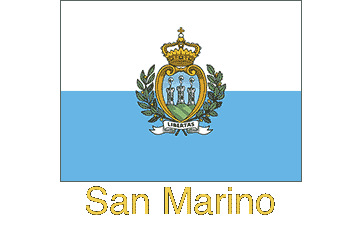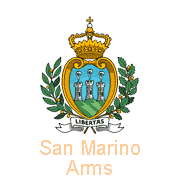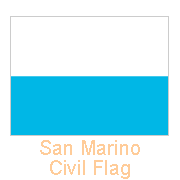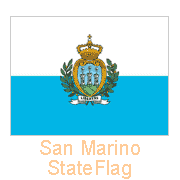Flags from San Marino

The symbols of San Marino
Founded in the year 301, San Marino was officially styled as the "Most Serene Republic of San Marino" ("Serenissima Repubblica di San Marino") after 1243 and is the world's oldest surviving sovereign state; although tiny, it has been able to keep its independence over the centuries.
you may then send it as a postcard if you wish.
It chose its national colours, white and blue, from its traditional arms in 1797 in the face of Napoleon Bonaparte's conquests in Italy. Blue is a symbol of liberty and recalls the sky; white stands for peace and represents the snow on Mount Titano and the clouds above it. Napoleon recognised San Marino's independence in 1799. San Marino concluded a Treaty of Friendship with the just established united Kingdom of Italy in 1862 and formally adopted its flag by a Decree of the Supreme Council on 6 April of that year.
The flag is white over blue with the traditional coat of arms placed in the centre for official purposes only. The arms, dating at least back to the 14th Century, shows the towers of the three citadels on Monte Titano: Guaita, Cesta and Montale, topped with vanes that look like ostrich feathers, surrounded by a wreath of laurel and a wreath of oak, symbolising glory and strength. The Latin motto "Libertas" (Liberty) dates back to the 4th century when the state was a refuge for those fleeing religious persecution. The arms is topped by a crown, symbolising the sovereignty of the people, although San Marino has always been a republic.





